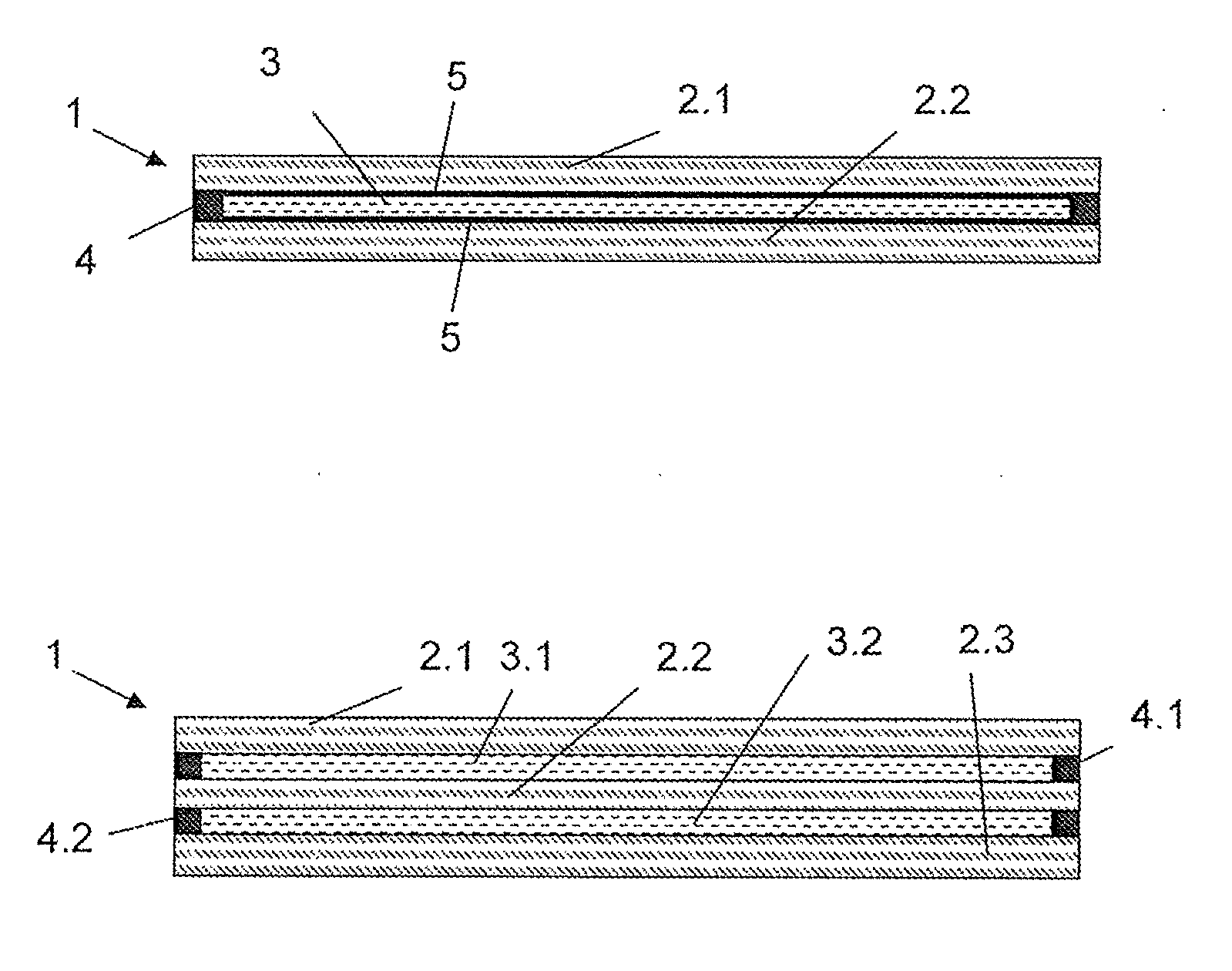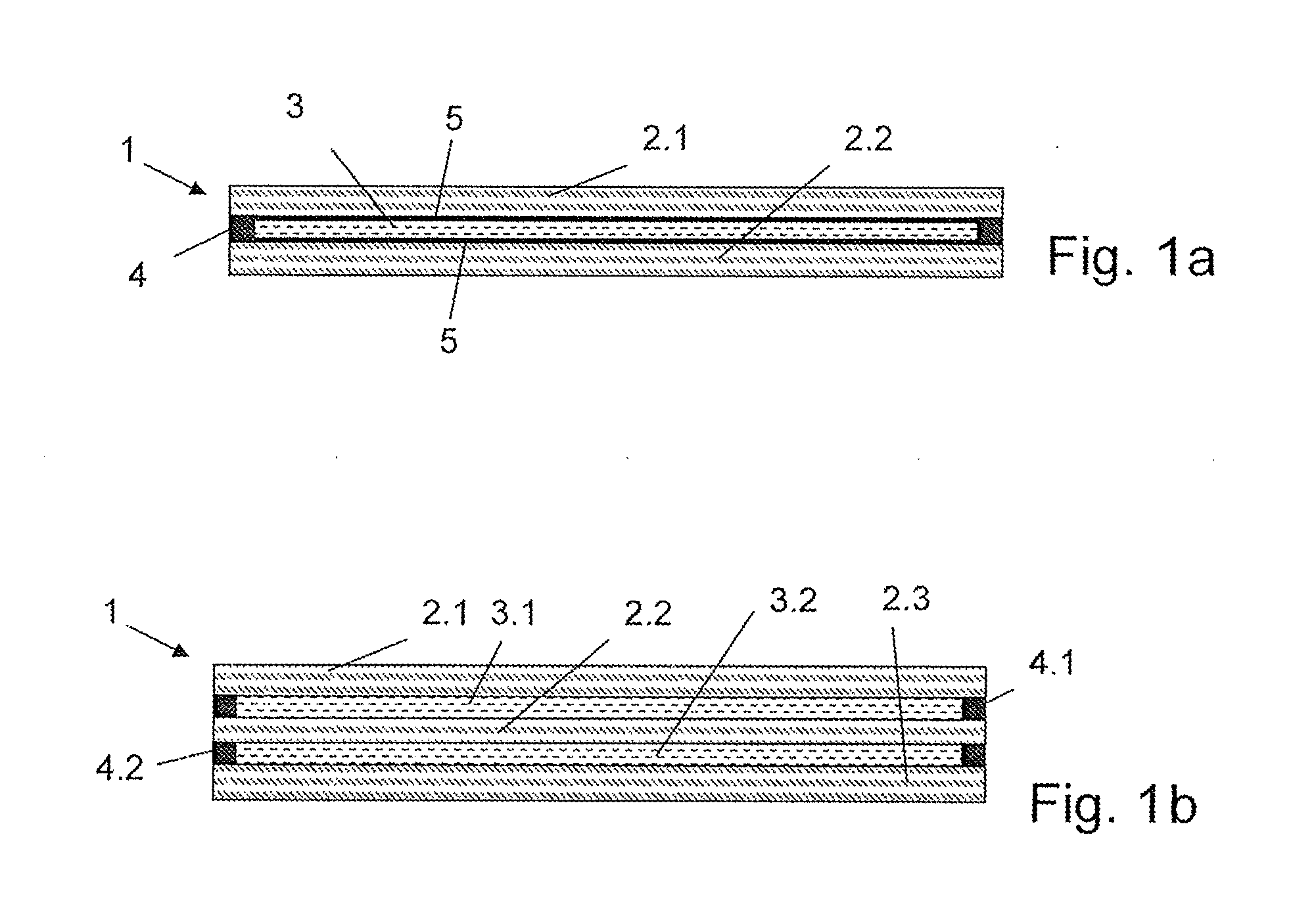Fire protection glazing and method for producing a fire protection glazing
a technology of fire protection glazing and fire-protection properties, which is applied in the direction of coatings, decorative arts, building components, etc., can solve the problems of poor adhesion to the glass surface and are more prone to mistakes, so as to improve the fire-protection characteristics of fire-protection glazing, improve care and attention, and ensure the quality. reproducibility
- Summary
- Abstract
- Description
- Claims
- Application Information
AI Technical Summary
Benefits of technology
Problems solved by technology
Method used
Image
Examples
example 1
[0063]A fire-protection mass is mixed from the following components:
5.42 w[%]methacrylamide4.58 w[%]acrylic acid0.17 w[%]methylene bisacrylamide (MBA)10.00 w[%] NaCl1.50 w[%]NaOH78.16 w[%] water0.17 w[%]initiator (peroxide sulphate)
example 2
[0064]Firstly, the educts of the fire-protection layer 3 are mixed into a fire-protection mass with the following weight by percent:
5.4 w[%]methacrylamide 4.6 w[%]acrylic acid0.15 w[%]methylene bisacrylamide (MBA) 2.5 w[%]KCl0.10 w[%]NaOH87.1 w[%]water0.15 w[%]initiator (peroxide sulphate)
[0065]The pH value of this acidic mixture is about 4.5. The mixture is subsequently filled into the space which is delimited by the edge sealing between two glass panes. A polymerisation is initiated during a time of 400 minutes in a furnace at 60° C., and the fire-protection layer cures between the two glass panes
Example Silanisation
[0066]2 g of vinyl silane (vinyl triethoxysilane) was dissolved in 100 ml of a 1 / 1 water / propanol mixture. The solution is sprayed onto two cured glass panes. A first glass pane is connected to a second glass pane via an edge sealing (edge unit) after a drying time of 5 minutes. The mixture of the educts of the fire-protection layer 3 and which is specified in Example...
PUM
| Property | Measurement | Unit |
|---|---|---|
| temperature | aaaaa | aaaaa |
| viscosity | aaaaa | aaaaa |
| temperature | aaaaa | aaaaa |
Abstract
Description
Claims
Application Information
 Login to View More
Login to View More - R&D
- Intellectual Property
- Life Sciences
- Materials
- Tech Scout
- Unparalleled Data Quality
- Higher Quality Content
- 60% Fewer Hallucinations
Browse by: Latest US Patents, China's latest patents, Technical Efficacy Thesaurus, Application Domain, Technology Topic, Popular Technical Reports.
© 2025 PatSnap. All rights reserved.Legal|Privacy policy|Modern Slavery Act Transparency Statement|Sitemap|About US| Contact US: help@patsnap.com


